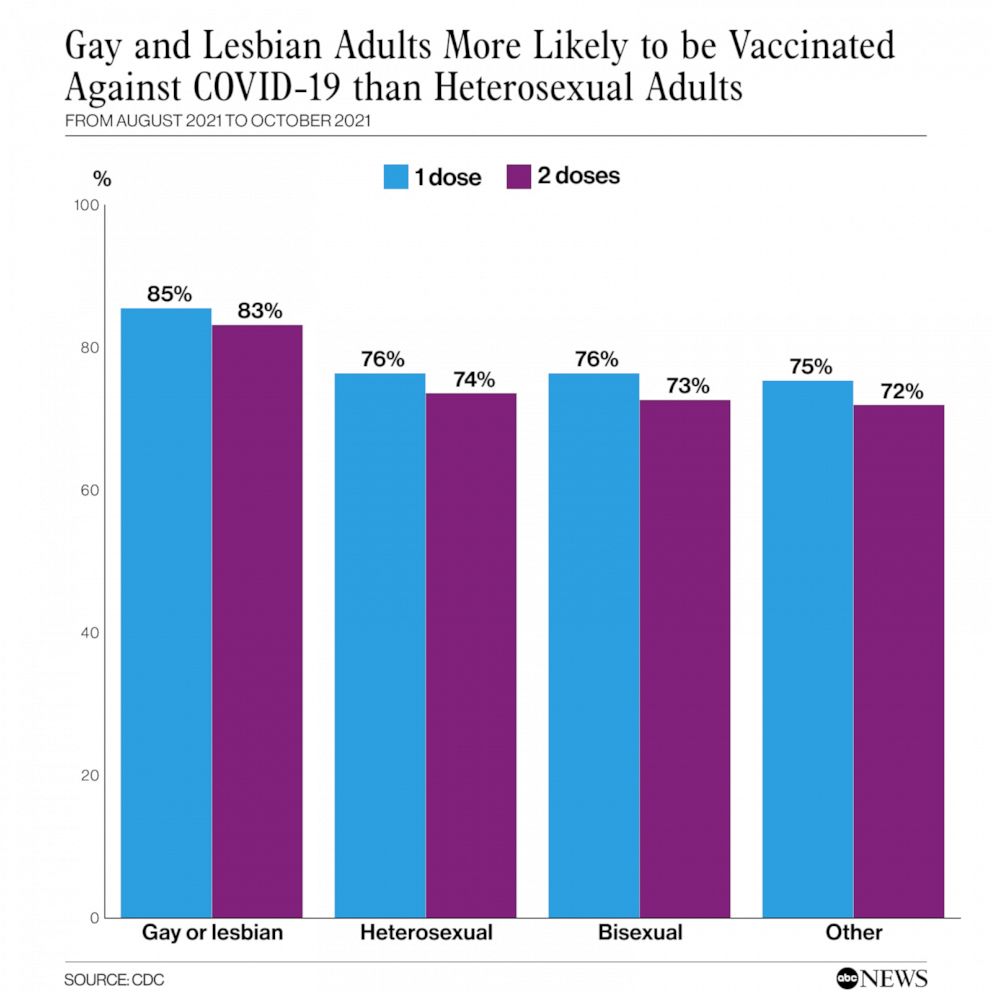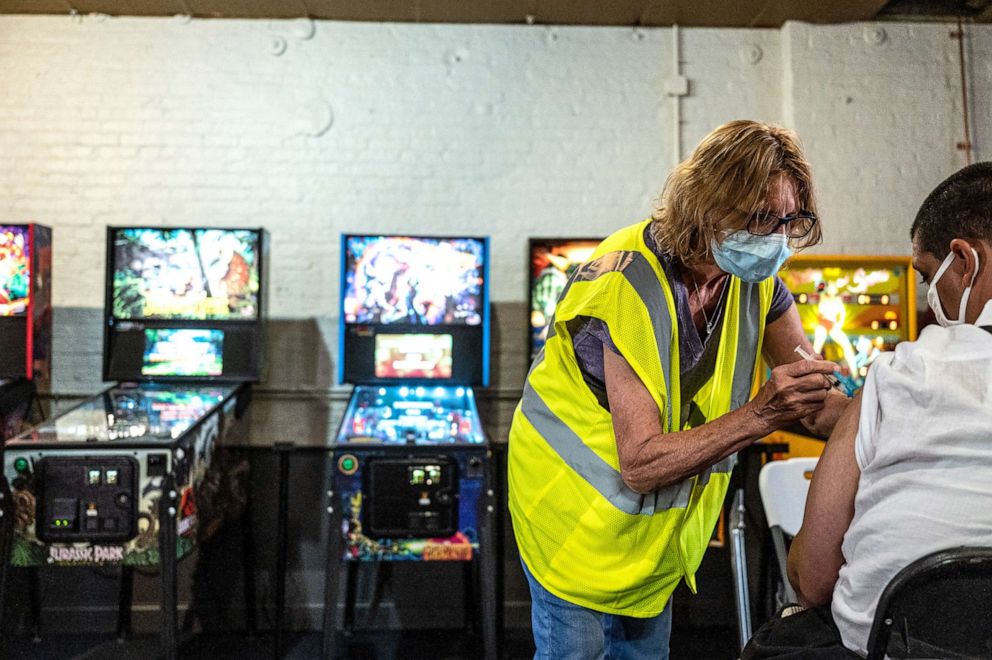Gay and lesbian adults had higher COVID-19 vaccination rates than heterosexual adults: CDC
Gay and lesbian adults were also more likely to believe in vaccine safety.
Gay and lesbian adults are more likely to have been vaccinated against COVID-19 than heterosexual adults, federal officials said Thursday.
A new study from the Centers for Disease Control and Prevention found 85.4% of gay and lesbian Americans above age 18 had received at least one vaccine dose as of October 2021.
By comparison, 76.3% of heterosexuals reported receiving at least an initial dose by the same date.
Additionally, gay and lesbian adults were more likely to be concerned about COVID-19 and to believe in the safety and efficacy of vaccines.
"We know that the prevalence of certain health conditions associated with severe COVID-19 illness, such as cancer, smoking, and obesity, are higher in LGBT populations, and access to health care continues to be an issue for some people in the LGBT community," Dr. A.D. McNaghten, a member of the CDC’s COVID-19 Emergency Response Team and corresponding author of the study, told ABC News. "We wanted to see if vaccination coverage among LGBT persons was the same as non-LGBT persons."

For the survey, CDC researchers collected data from the National Immunization Survey Adult COVID Module between Aug. 29, 2021, and Oct. 30, 2021.
The data also showed that bisexual and transgender adults had similar vaccination rates to heterosexual adults with 72.6% of bisexual adults fully vaccinated by the end of October, as were 71.4% of transgender adults.
When it came to race/ethnicity, gay white men and lesbian white women had higher rates of vaccination at 94.1% and 88.5%, respectively, receiving at least one dose compared to heterosexual white men and women at 74.2% and 78.6%, respectively.
Hispanic gay men also had higher COVID vaccination rates at 82.9% compared to 72% of Hispanic heterosexual men.
However, Black and Hispanic lesbian women had lower rates of vaccination at 57.9% and 72.6%, respectively, compared to Black and Hispanic heterosexual women at 75.6% and 80.5%, respectively.
McNaghten said the disparity between the percentage of white gay men with at least one vaccine dose and Black lesbian women with at least one dose is "alarming."
The survey also found that gay, lesbian and bisexual adults were more likely to believe in the safety and protection of vaccines than heterosexual adults.
A total of 76.3% of gay and lesbian adults said they were "completely" or "very" confident in the safety of COVID vaccines, as did 70.4% of bisexual adults. Comparatively, only 63.9% of heterosexual adults said they felt the same way.

Additionally, 90.8% of gay and lesbian adults and 86.8% of bisexual adults said COVID vaccines are "very" or "somewhat" important to protect themselves compared to 80.4% of heterosexual adults.
Transgender and nonbinary adults, on the other hand, were confident about vaccine protection but not safety, with 83.2% saying they believed vaccines were necessary to protect against COVID, but only 62.8% saying they believed the shots are safe.
The researchers found 56.8% of gay and lesbian adults and 51.3% of bisexual adults were "very" or "moderately" concerned about COVID compared to 48.1% of heterosexual adults.
The authors note there are limitations of the study including that participants self-reported their vaccination status and potentially selected a sexual orientation category they didn't identify with because they didn't see an option that fit them.
But McNaghten says it is vital to make sure the LGBT population is vaccinated. She added that further studies are needed to figure out why there are differences by gender and race/ethnicity among gay and lesbian men and women.
"Additional research could help determine if these differences are associated with socioeconomic or health care access issues, and if there are factors influencing vaccine uptake or vaccine hesitancy within specific groups," she said.
In the study, the authors said it is important to include sexual orientation and gender identity when collecting data on vaccination status to help eliminate disparities.




